Solar Eclipse Stirs Excitement at TBS
Eighth graders Ella Pierman (foreground) and Matthew Postman (background) test out some of Ms. Featherston’s solar glasses on Monday morning prior to the eclipse.
Some things don’t happen very often – snow in South Florida, the Cubs winning the World Series, Nicolas Cage making a good movie – so when such things do occur, it makes it that much more special. For example, such was the case with the Great American Eclipse that took place on August 21, the first Monday of the school year.
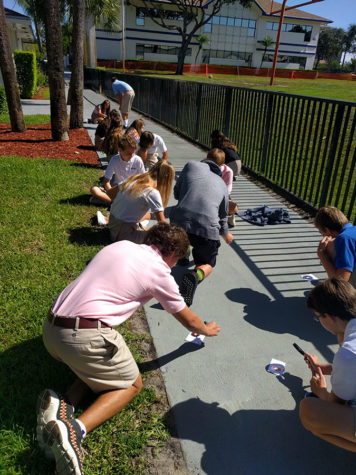
Students in Ms. Featherston’s science class focus sunlight onto a piece of paper to simulate the effects of staring at an eclipse.
On that date, The Benjamin School had a half- day in order to keep its students safe.
According to livescience.com, author Stephanie Pappas writes that “the light of an eclipse really can damage your eyes…The condition is called solar retinopathy, and it occurs when bright light from the sun floods the retina on the back of the eyeball.This damage is often painless, so people don’t realize what they’re doing to their vision.”
Because of the danger posed by this rare occurrence, (the last time a full solar eclipse was visible from coast to coast in the U.S. was 99 years ago) and because it took place soon after the start of school, TBS had no other choice but to make the day of the eclipse a half-day. The School simply did not have enough safety equipment – such as solar-safe eye-wear – to distribute to faculty and students on each of its two campuses. Head of Middle School Mr. Hagy took many different factors into account when deciding how to conduct the day.
“We wanted to fully educate the [younger students] about the eclipse before it happened to make sure everyone stayed safe and kept their vision,” he said. “Also, since the eclipse time is right during our dismissal, I had concerns about parents stopping to watch it, [and] not paying 100% attention to students and teachers.”
Prior to the eclipse, as Mr. Hagy stated, the Middle School made sure it educated the students about how to stay safe and protect their eyes.
To simulate the effect of the sun on eyes, eighth-grade science teachers Sara Featherston and Ms. Gabriele St. Martin took the eighth graders outside to conduct an experiment. Students first put a magnifying glass over a piece of paper with an eye printed on it. After holding the magnifying glass to the paper for a few seconds, the paper began to burn since the sun light was focused on one part of the paper. The experiment was an eye-opener to eighth grader Sydney Steinger.“It made not want to look near the sun,” she said. “The experiment shows how easily the sun can burn, [and] I do not want that to happen to my eyes.”
In addition, students simulated the moon’s cycle and its orbit around the Earth in class by using a flashlight to simulate the sun and foam balls to simulate the earth and the moon.
When it came to the actual eclipse, students knew well enough to not look up unless they had protective eyewear.
Many students, like sixth grader Natalie Cona, bought special sunglasses to help protect their eyes. These glasses are much more powerful than normal sunglasses, and they are specially made for
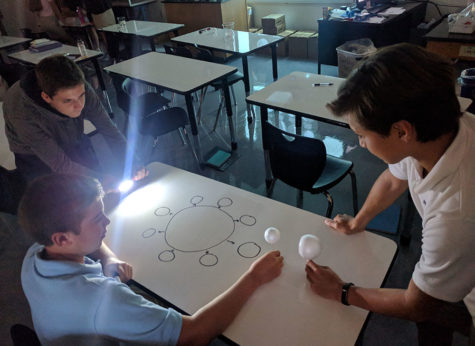
Left to right: In Ms. Featherston’s B period SEA class, eIghth graders Ignas Berciunas, James Key, and Will DiMaio simulate the moon’s orbit around the earth using a flashlight and foam balls.
the eclipse. Cona went to Nashville, Tennessee, which was the umbra, or place where there was 100% totality, meaning the moon fully blocked the sun from her vantage point. Of course, she and her family were equipped with the special sunglasses. “It was really a once in a lifetime chance,” said Cona. “My favorite part was right when the sun went behind the moon [and] it transformed into night. You could see the rim of the sun around the moon, and you could even see stars.” Eclipses have not only amazed people across the globe in current times, but eclipses have been doing so for thousands of years, dating back to prehistoric times.
Other students were not as impressed. Eighth grader Jackson Worcester compared it to something he sees almost every night.“To me, it really just looked like a crescent moon. It was pretty cool at first, I guess, but after I looked at it for a few minutes it just looked like a moon to me. I also tried to look at the sun normally for a second, and it just looked like the normal sun. I don’t feel like I would need to see it again.”
However, even without special glasses, students still found a way to experience the eclipse. “What you can do,” said sixth grader Ellie Bickel, “is if you take a piece of paper, you can hole punch it and watch the shadow of the moon go in front of the sun through the hole. That way, you can see the reflection of the eclipse and still protect your eyes.”
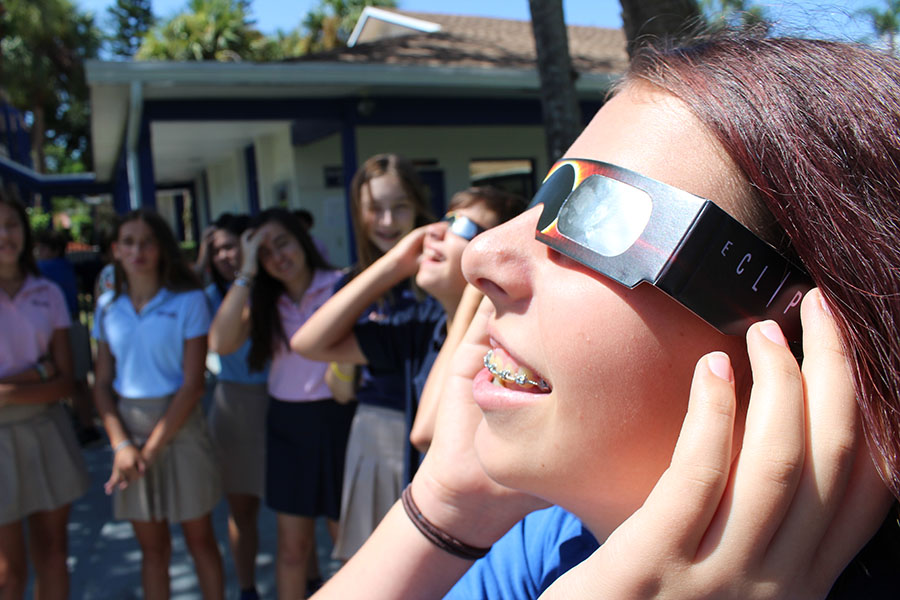
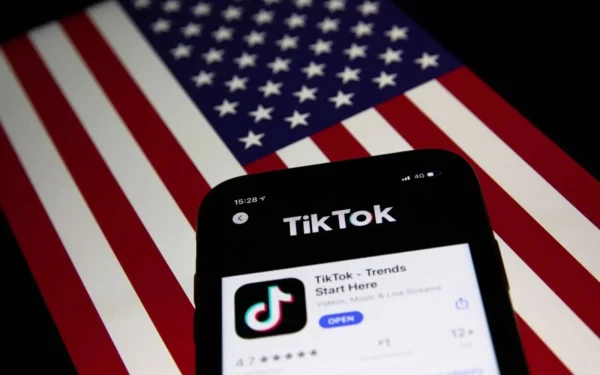

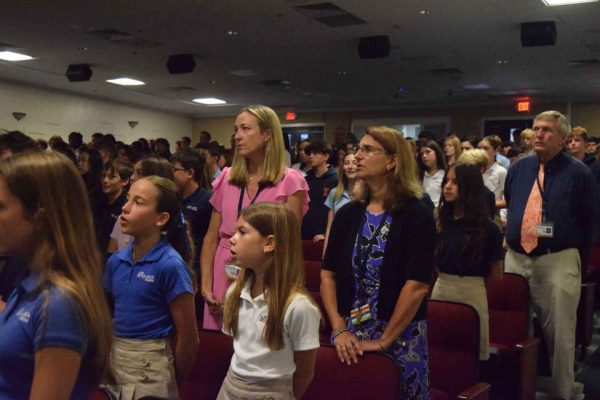
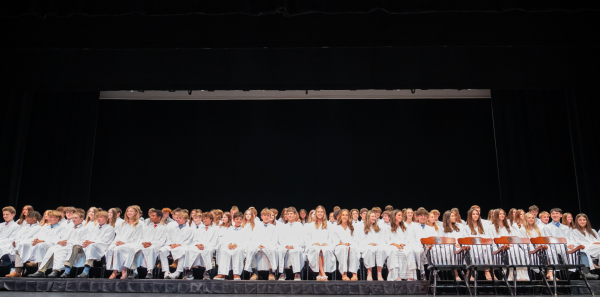

Nancy Horgen • Aug 28, 2017 at 6:29 pm
Well written article — informative, insightful and relevant. Good “eye witness” accounts.